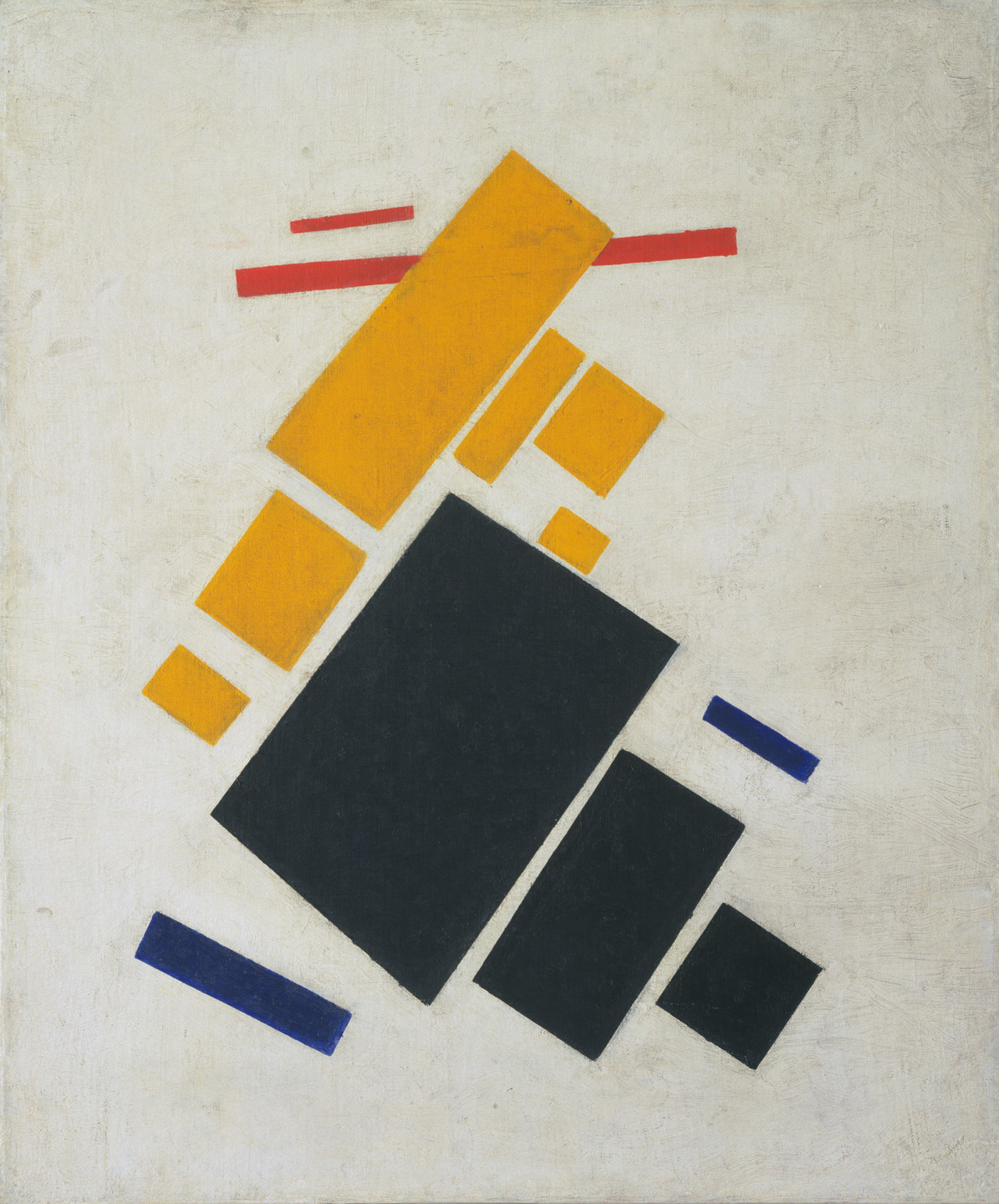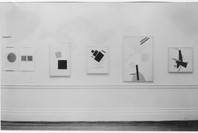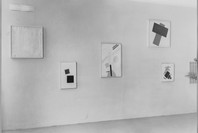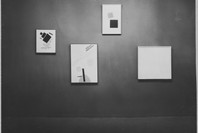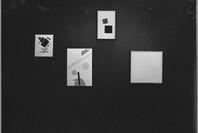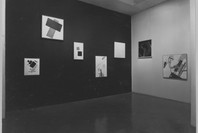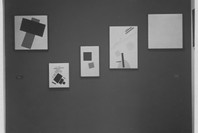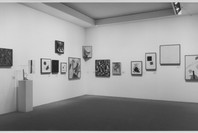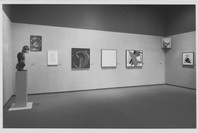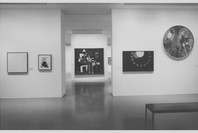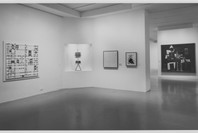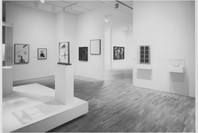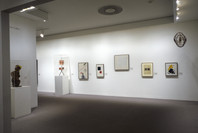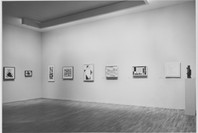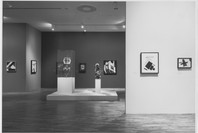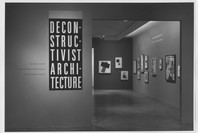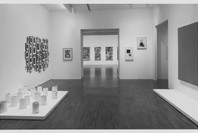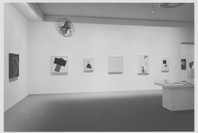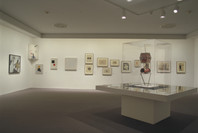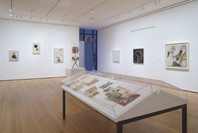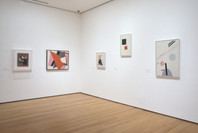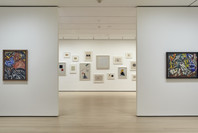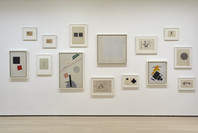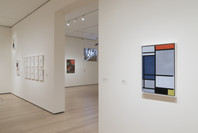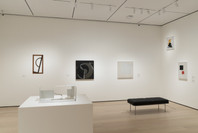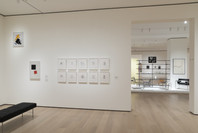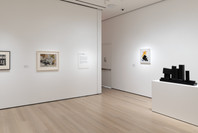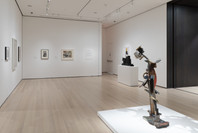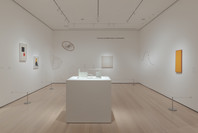In December 1915, at the Last Futurist Exhibition of Paintings 0.10 (zero-ten) in Petrograd (now St. Petersburg), Malevich unveiled a radically new mode of abstract painting that abandoned all reference to the outside world in favor of colored geometric shapes floating against white backgrounds. Because his new style claimed supremacy over the forms of nature, he called it “Suprematism.” In a leaflet distributed at the exhibition, Malevich wrote, “I transformed myself in the zero of form, I destroyed the ring of the horizon and escaped from the circle of things, from the horizon-ring that confines the artist and forms of nature.” All of the works on this wall were included in this landmark show. Since Suprematism rejected the deliberate illusions of representational painting, Malevich saw it as a form of realism—"new painterly realism" was his term—and understood its subject to be the basic components of painting’s language, such as color, line, and brushwork. The basic units of this visual vocabulary were planes, stretched, rotated, and overlapping. For Malevich, the white backgrounds against which they were set mapped the boundless space of the ideal.
Gallery label from Inventing Abstraction, 1910–1925, December 23, 2012–April 15, 2013.
